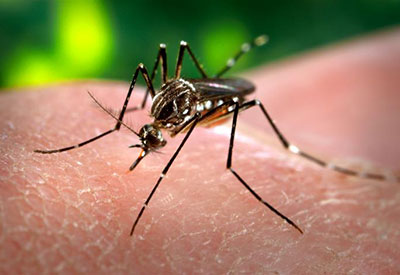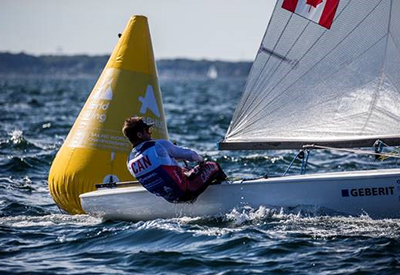Canadian Researchers Use Tires to Fight Zika-carrying Mosquitoes

Apr 26, 2016
A group of Canadian and Mexican researchers have developed a simple, inexpensive, and environmentally-friendly way to drastically reduce the number of surviving eggs laid by Aedes aegypti mosquitoes—the species that can transmit the Zika, dengue, chikungunya and yellow fever viruses.
The team was funded by Grand Challenges Canada, a Canadian Government-funded organization that supports bold and innovative research on health issues in middle and low-income countries.
Photo: An Aedes aegypti mosquito feeds on a human. (Photo: Centers for Disease Control and Prevention, United States Department of Health and Human Services)
Over the course of a 10-month study in Guatemala, researchers experimented with modified tires as a mosquito attractant, and found their strategy to be up to seven times more effective than standard traps in the same area, including traps made of one-litre buckets. It also cost up to one third less than cleaning ponds, and 20 per cent less than using pesticides—which can cause collateral damage to other species.
“We decided to use recycled tires – partly because tires already represent up to 29 per cent of the breeding sites chosen by the Aedes aegypti mosquitoes, partly because tires are a universally affordable instrument in low-resource settings, and partly because giving old tires a new use creates an opportunity to clean up the local environment,” said lead researcher Dr. Gerardo Ulibarri of Laurentian University.
The simple design works like this: a standard car tire is cut into two 50 centimetre sections. After installing a small, plugged PVC pipe into the middle of the bottom section, the tire is filled with a milk-based solution and pieces of paper or wood are inserted on either side. The other tire section is laid over top as a roof. Together, this is called an “ovillanta.” The ovillanta is put outside and the strip of paper or wood is removed twice weekly and burned.
{videobox}993nqyBwbs&{/videobox}
In addition, the milky solution is drained through the PVC pipe and filtered—with something as simple as a t-shirt strip wrapped over a container and secured with a rubber band—for larvae. The larvae are burned and the liquid is poured back into the tire. By reusing the same liquid, female mosquito pheromones are quickly concentrated, making the ovillanta a more appealing place to lay eggs.
For civilians, simply burning the eggs and larvae is enough, but researchers kept and counted the eggs and larvae before destroying them.
During the 10-month study, the team collected more than 18,000 eggs per month using 84 ovillantas in the small town of Sayaxche, while the same number of standard bucket traps only collected 2,700 eggs per month.
“While in its early days, this integrated innovation of a mosquito trap coupled with training local health workers and engaging communities in vector control is a promising example of how Canada’s leadership in development innovation can respond to public health emergencies such as Zika,” said Dr. Peter A. Singer, Chief Executive Officer of Grand Challenges Canada.
Story courtesy of http://www.canadiangeographic.ca/blog/posting.asp?ID=1973





























